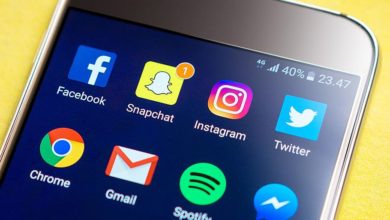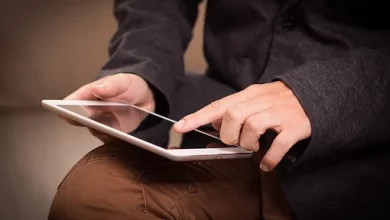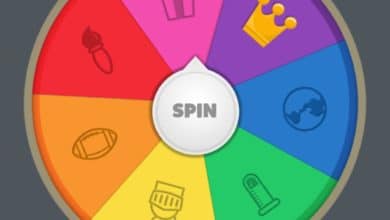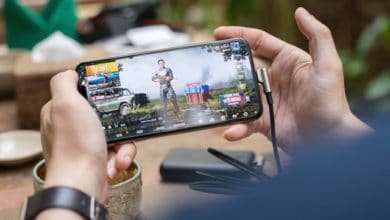Looking for a smartphone that isn’t pricey and does the job? Confused about what you should be looking for when buying your phone? Well, I have got a list for you with the best specs that you can get and the variety of brands that you can choose from.
But first let me clarify what is the difference between a network locked and an unlocked phone and what should you be looking for and what is best for you.
- What is the difference between network locked phone and a unlocked phone?
- What specification to look for when buying a phone?
- Best Phone under $150?
- Fastest Phone under $150?
- Best android Phone under $150?
- Best Google Phone under $150?
What is the difference between network locked phone and a unlocked phone?
Network locked phones
The process by which a phone is locked to one carrier is called a SIM lock or network lock. It is a built-in technical restriction or limitation that is put on the phone at activation. The intention of this restriction is so that mobile phone providers can ensure that the phone may only be used in their network or in certain limited countries. The phones are locked to only accept a limited number of what are called IMSIs (International Mobile Subscriber Identities) and may restrict the phone to only use one SIM in its service life. When you buy a brand new phone, it is very likely locked, especially if you bought it under contract. Phones of all sorts are locked ranging from the cheapest, oldest phones to the highest quality, brand new mobile phones. So why do providers use SIM locks on their smartphones? To understand this, we have to take a look at the economics of the cell phone sales business. High-end smartphones are often prohibitively expensive to purchase for many consumers, so in order to enable their adoption and make more money off their monthly contract fees, carriers have come to a mutually beneficial agreement with smartphone manufacturers. The providers subsidize the purchase or even provide the phone free of charge with a mandatory monthly contract usually with a duration of about two years. This can shave off hundreds of dollars off the price of the phone, which makes the contract more attractive and appealing for new customers. With the contract being signed in return for the subsidized price, providers are able to protect their investment by recovering the cost of the subsidy gradually over the life of the contract. This is usually enforced with an early termination fee (ETF) that serves to ensure that they will get the money back if the customer doesn’t honour the contract. In order to purchase an unlocked phone that may be used in any carrier network, the phone must normally be purchased at the full retail price (unlocked).
The biggest reason mobile phones are locked is to keep you under a contract with your wireless carrier. If, for instance, you open a contract with a specific carrier, like Verizon, and you purchased a new iPhone through this plan, the cost of the phone is built into your monthly bill. So instead of paying for the phone upfront, the cost is broken up and added into a two-year contract. So you’re paying for the phone in 24 monthly instalments, in addition to your service fees. If you decide to switch to another carrier, you have to get the phone unlocked.
When you buy a phone online or from a carrier, the company will tell you whether it is unlocked or not. Usually, this is only the case if you pay in full for the phone. When you purchase an unlocked phone, you don’t have to do anything.
However, if it is locked, you will need to figure out the specific criteria for your carrier that you are under contract with. They will be able to explain and negotiate the terms and conditions of your contract to find an agreement, so they can give you the code that is used to unlock your phone. There are many benefits to having a phone unlocked, including the flexibility of changing carriers to take advantage of better deals as well as being able to trade or sell the device for a much better price but usually unlocking your phone can be expensive, and most of the time it involves paying to get out of your remaining contract. This is why it is best to purchase a phone outright or buy an unlocked phone before entering a contract.
Unlocked phones
An unlocked phone, by comparison, doesn’t have that lock on it which means you can just put in any SIM card and the phone works and is tied to your wireless account. For years, unlocked phones were almost exclusively GSM. But recently, more smartphones are universal, like the iPhone X, Google Pixel 2 and Moto G6. When in doubt, always check with the phone manufacturer or your network carrier for compatibility. Don’t forget to put in mind that when buying an unlocked phone, you most likely will not be able to pay for it in no-interest instalments like you would if you bought it through your carrier; instead, you’ll have to pay everything in one lump sum. Although many manufacturers do offer you some financing, though that varies on a case-by-case basis.
And, obviously, you won’t instantly have network service when you take your unlocked phone out of the box; you’ll need to go to a network that supports the phone, choose a plan, get the proper SIM card and go through an activation procedure, which will differ depending on your wireless provider. Also buying an unlocked phone enables you to update it frequently and sell it freely without having to pay the bills which is great for people who love to keep up with the smartphone market.
In Short
There are a couple of benefits to purchasing a locked smartphone. First, it is sold at a discounted price. By having you agree to stay on your carrier network, the carrier subsidizes a portion of the cost (or bundles it into your monthly subscription).
Also, locked phones cancels theft. Unlocked phones are more likely to be sold illegally or used overseas with different carriers. Verizon for instance locks its new phones as a security precaution.
Although locked phones remain the most prevalent in the US, unlocked devices are growing in popularity for few reasons:
- Freedom: You can use the same phone with any compatible carrier, allowing you to switch network providers and plans as you want to secure the best coverage areas and rates.
- Resale rates: You’ll mostly get more money when you sell a used unlocked phone because buyers know they have more carrier choice about where they can use it.
- International savings: When overseas, you can activate your unlocked device with any other foreign carrier that’s compatible with your phone’s technology. This allows you to pay local rates rather than roaming charges.
Unlocked phones are often considered a good option for international travelers. They may also benefit anyone who likes to frequently upgrade phones because you’re free to buy a new smartphone at any time. Forgoing carrier discounts means you pay full price for an unlocked phone, but you can also sell an older unlocked device to help offset the cost of a new one.
What specification to look for when buying a phone?
That being said, let me show you what specs you want to look for when buying your new phone!
Battery
We usually tend to overlap multiple apps while using our phones. Stronger battery life is always an advantage. Are you the kind of phone user who is likely to have multiple apps open simultaneously? Do you see yourself being a heavy consumer of video-streaming apps or playing games? Heavy online usage tends to drain batteries faster. If you belong to this category of users, then it is better to go for a phone with a long-lasting battery.
A cell phone battery that doesn’t hold its charge can be a frustrating and annoying experience. You’ll always need to have a charger close by to keep it from dying. You can prevent this from happening by knowing more about how cell phone batteries work and how to maintain them. I’ll cover a lot of information about smartphone batteries that can help you make better buying choices and handle your phone more efficiently.
Mobile phones and tablets these days come with different types of batteries and it is their quality that decides how much energy they can store and hence how long the device can be operated with a single charge.
Engineers work on basically three parameters of a battery (chemical composition, size, and weight).
In terms of chemical composition, there are only two types of batteries used in modern cell phones Lithium Polymer (Li-Poly) and Lithium Ion (Li-Ion).
Lithium Polymer (Li-Poly) Batteries
Li-Poly or more correctly lithium-ion polymer battery (abbreviated as LiPo, LIP, Li-poly, lithium-poly) is the latest and most advanced technology for cell phone batteries. This makes the batteries ultra-lightweight, they do not suffer from memory effect and will deliver up to 40 per cent more battery capacity than a Nickel Metal Hybrid (NiMH) (one that you use in your camera) of the same size.
“Memory effect” happens when rechargeable batteries are not fully discharged between charge cycles; as a result, the battery “remembers” the shortened cycle and thus reduces its capacity. Devices like Blackberry PlayBook, Samsung Galaxy S3 use this type of battery. This type of battery is also used in power banks, very thin laptop computers, portable media players, wireless controllers for video game consoles, wireless PC peripherals, electronic cigarettes, and other applications, like electric vehicles and UPS systems. Put in mind that The typical estimated life of a Lithium-Ion battery is about two to three years or 300 to 500 charge cycles, whichever occurs first, although, they don’t have expiration dates, they can see a drop in performance after excessive use or passed time.
Lithium-Ion (Li-Ion) Batteries
This is the older and the most popular technology for phone batteries. The only real drawback of Lithium-Ion cell phone batteries is that they are much more expensive. However, they have a higher energy density compared to the Li-Polymer battery type.
Both Li-ion and Li-Polymer batteries have the same chemical composition but the difference lies in their tendency to overheat. Because of this, Lithium-Ion batteries have an active protection circuit–essentially an onboard computer–that prevents the battery from overheating and potentially bursting into flame.
Lithium polymer batteries do not need the active protection circuit, which is why it is possible to manufacture them in sizes as small as a credit card.
It lasts only two to three years after manufacturer. It is sensitive to high temperatures too. So after that being said what is the best type for me?
For the user, the current battery technology market doesn’t offer much of a choice, as it is for the manufacturers to make a choice, who has to decide the weight of the tablet or the smartphone. Lithium-ion batteries have a greater energy capacity than Lithium Polymer batteries, so in devices that have higher current requirements, Lithium-Ion batteries are preferred.
In devices where size is paramount, Lithium Polymer is the choice. Lithium-ion batteries are also cheaper to manufacture than lithium polymer batteries, so when the cost is a factor, lithium-ion is the choice, because lithium-ion batteries have a high energy density and cost less than lithium polymer.
Battery life is expressed in milliampere-hours (mAh), which describes how much energy your phone battery can provide. Generally speaking, a high mAh value can offer an extensive battery life, although it also depends on how much power your device needs to stay powered for an hour. Plus, the overall efficiency of your mobile phone dictates how long your battery will last. Some phones pack their battery with up to 10,000 mAh but it’s rare, the mAh range for phones under 150$ is between 4000 mAh and 10000 mAh the bigger capacity the fewer phone options and of course with the sacrifice of better specs, so the choice is up to you.
Random access memory (RAM)
RAM is a super-fast type of storage, it is faster than your phone’s main storage (ROM) where your apps, photos, videos, and music live and it helps your smartphone to work and feel fast.
You can think of RAM as your pocket and your phone’s main storage as your backpack. It’s much faster and easier to pull something out of your pocket than it is to pull something out from your backpack which requires more time and effort.
When you turn on your phone and open an app for the first time, your phone pulls the operating system (OS, android for instance) and app’s data from your phone’s slower main storage and stores the bulk of that operating system and app data in your phone’s faster RAM so you can use different elements and features of the OS and app quickly.
When you’re finished with the app you’re using, your phone keeps the app you last opened and everything you were doing on it in the phone’s random access memory, even if you switched to a different app.
When you return once again to an app you used a while ago, it will open right where you left it off as if you never even left the app in the first place because it has been stored safely in your phone’s random access memory. Essentially, the apps you used are kept running in the background while you are using different apps.
Switching between apps and picking up right where you left off is called “multitasking.” If a phone is multitasking well and smoothly without feeling that it is lagging, it’s because it makes good use of the random access memory or simply has a lot of it.
If a phone didn’t have random access memory, that would be a hassle because apps would fully close every time you switch apps. That means apps would need to be re-opened once again fully as if you opened them for the first time after turning on your phone, which will cause an unpleasant and unnecessary delay before you can continue using the app once again. Imagine reading a blog while using Facebook for instance and someone calls you, you most probably will lose the post you were reading before that call.
Your phone’s main slower storage (ROM) could potentially keep your OS and used apps running in the background, but it’s much, much slower than your phone’s random access memory. Your phone could have the fastest chip in the world and it would still feel slow without random access memory.
The size of Random-Access Memory or RAM has a huge effect on the performance of the phone that you are going to buy. A larger RAM will enable you to use much more apps at the same time without the feeling of lag compared to smaller random access memory.
When you run an application or a game, it uses a specific amount of random access memory until you close it.
If you have too many apps running in the background and your phone starts to lag, this means that you must close some of your background running apps if you are not using them for your phone to free some random access memory so that your phone will be running smoothly again as before. For a budget under $150, you can already get a phone with 2GB to 4GB random access memory and much more If you have too many apps running in the background and your phone starts to lag, this means that you must close some of your background running apps if you are not using them for your phone to free some random access memory so that your phone will be running smoothly again as before. For a budget under $150, you can already get a phone with 2GB to 4GB random access memory and much more. Put in mind that the more random access memory you put into your smartphone, the more power that will be used the more your battery life would be shorter, because random access memory takes up the same amount of power regardless of what’s in it if it’s an application or it’s just free, your battery is still paying for it in terms of power.
In other words, if you aren’t using the random access memory, then it may be an unnecessary effort for your battery. Those background processes that I mentioned earlier also have an associated cost, as anyone who has used the Facebook app on Android will know.
Because even if they’re not doing much work or effort, they can cause the processor to be ready to service any work that they have to do and that surely contribute to much more energy drain. But anything over an 8GB of random access memory is probably overkilled for the vast majority of people using smartphones today.
Central Processing Unit (CPU)
The processor is the brain of a device. It’s what handles the instructions of software apps. A processor does consist of multiple cores which are the Dual, Quad, Hexa, and Octa-core. What do these cores do exactly? Processor cores distribute the work that comes in when you are using your phone. One core has a maximum number limit of instructions that it can process within a certain amount of time.
Put in mind that the central processing unit inside your smartphone is responsible for running all the logic and operations required by your smartphone’s operating system as well as your apps. Each processor core will run at a clock speed commonly between 2 and 3 GHz in smartphones.
CPU or Central Processing Unit also do affect the performance of your smartphone. A phone’s central processing unit can be classified as a low-range, mid-range, or high-range. Low-range CPUs are less fast compared to mid-range CPUs. You can expect that the phones under the $150 line to have a low-range or mid-range CPU. Because unfortunately a high-range central processing unit is usually used by phones over 800 dollars.
The challenge with central processing units is that it is difficult for a normal buyer to identify the classification of the central processing unit of the phone he is buying. Even after identifying the classification of the processing unit, comparing phone processing units under the same classification is also not that easy thing to do. Information such as the number of gigahertz and cores (GHz) are numbers that can be really confusing.
Most websites that review the processing unit performance of phones use tools and benchmarks to test the processing unit speed and compare it with other phones. However, after reading the results, you will still find it difficult to understand the graphs shown to you without actually experiencing the use of any of the units that are used to compare those phones.
However, the overall speed and performance of the phone are generally determined by the combination of the random access memory size, central processing unit specs, and the Operating System (OS). You can still get an idea of the level of performance by looking at the paper description of these specs, but the best way for you to know the performance of any phone is to read the reviews from the people who already bought the phone themselves.
Operating system (OS)
All smartphones under the 150 dollar line will most probably be an android, you do not really have that much of a choice when choosing the operating system of your smartphone, but do not worry because android is a good and well-secured OS, I use it personally and I did not experience any problems.
Android is an excellent mobile operating system which is developed by Google. It is used by many and even most smartphones and tablets. The Android operating system (OS) is based on the Linux kernel and it has been around for nearly 15 years. Unlike Apple’s iOS, Android is an open-source operating system, meaning that developers can easily modify and customize the OS for each phone which means more freedom!
Camera
The rear camera of phones under 150 dollars may range from 8 megapixels to 16 and much more megapixels which are pretty decent and it does the job. You will also find phones that have dual camera specs and maybe more in this budget range. A dual-camera does allow you to capture wide lens photos and sometimes 3D photos using your smartphone’s camera. But always keep in mind that you do not always need a dual camera to capture great photos.
Storage
For that budget you can get at least a 32 GB of internal storage for a phone under $150. This storage size is already big enough and the job for most users. If you keep a lot of videos like movies for instance and large files, most or all of the smartphones in this budget will allow the use of a microSD card which can easily double or triple your storage for fair prices.
Display
Currently, there are six main display types used in mobile phones: TFT LCD, IPS-LCD, Capacitive Touchscreen LCD, OLED, AMOLED, and Super AMOLED.
Let’s start with LCDs. TFT LCDs are considered the most common. They deliver quality images and higher resolutions. IPS LCDs, which are mainly found in higher-end smartphones, offer improved battery life and deliver wider viewing angles. TFT LCDs are supposedly the most common type of display unit found in mobile devices. TFT LCD gives you good image quality and higher resolutions compared to earlier generation LCDs however, in narrow viewing angles and indirect light or sunlight there’s poor visibility. IPS LCDs are the next level of TFT LCDs providing wider viewing angles and lower power consumption which leads to much-improved battery life. IPS-LCDs obviously are costlier than normal TFT LCD and hence located only on higher-end smartphones. These types of displays are often found in iPhones, but by Apple’s proprietary names, “Retina,” or “Super Retina.” Then, there are capacitive touchscreen LCDs, which rely on the touch of a human finger for input.
OLEDs (Organic Light Emitting Diode) are considered an up-and-coming display technology – they don’t require any backlighting to display pixels. Fundamentally, each pixel emits its own light, allowing for darker blacks and brighter whites. This happens to be the newest technology for displays of mobiles and monitors. As far as the OLED tech is concerned you will find an organic material that is placed between two conducting sheets (an anode and a cathode), which are also put between a glass top plate (seal) and a glass-bottom plate (substrate). The time an n electric pulse passes or is applied between the two conducting sheets, electro-luminescent light is produced directly from the organic material sandwiched between. AMOLEDs (Active-Matrix Organic Light-Emitting Diode) combine a TFT display with an OLED display for energy savings, AMOLED screens can show us many things that we are present on OLED display like brilliant color reproduction, lightweight, good battery life, proper brightness, etc.
However, super AMOLED displays take upon the AMOLED displays and is primarily developed by Samsung. Super AMOLED is constructed with touch sensors placed on the display itself, as opposed to creating a separate touch-sensitive layer (as in capacitive touch screen). This makes it the thinnest display technology on the market. Super AMOLED displays are currently only present in Samsung devices but more phones could use the technology in the future.
The display technology that you will usually find in phones under 150 dollars is an IPS LCD display. This display technology is very vivid and can also be found in more expensive phones like iPhones. This type of technology is also very energy-efficient.
When it comes to displaying sharpness, you must consider the combination of the display size and display resolution because both affect the pixel density. Pixel density is measured in PPI or Pixels Per Inch. The PPI is a calculation that returns the number of physical pixels per inch on a screen or display of a device. It’s often referred to as Pixels Per Inch or PPI.
Pixel density has become increasingly important as the resolution of screens has increased dramatically in the past several years. For example, the Apple iPhone XR has a high-resolution screen with a pixel density of 323. In contrast, older XGA monitors had a PPI of around 85. Increased PPI can improve the quality of the viewing experience. Even when held closely, high PPI screens do not look pixelated (assuming that the image is of high enough quality, to begin with). The higher the PPI, the sharper the screen display. However, you do not need a phone with a very high pixel density.
Even the older iPhones (iPhone 7 for instance) only settle at 326 PPI as compared to other high-end phones that have around 500 PPI. This is because a very high PPI will not make a difference due to the limit of what our eyes can see.
For phones under 150 dollars, you can expect a 260 to 295 PPI. This range is already very decent, satisfactory and does the job.
Best Phone under $150?
That being said let’s jump right into my smart phone suggestions
Fastest Phone under $150?
Best android Phone under $150?
Best Google Phone under $150?
I hope that I have helped you out with deciding what smartphone works best for you!




